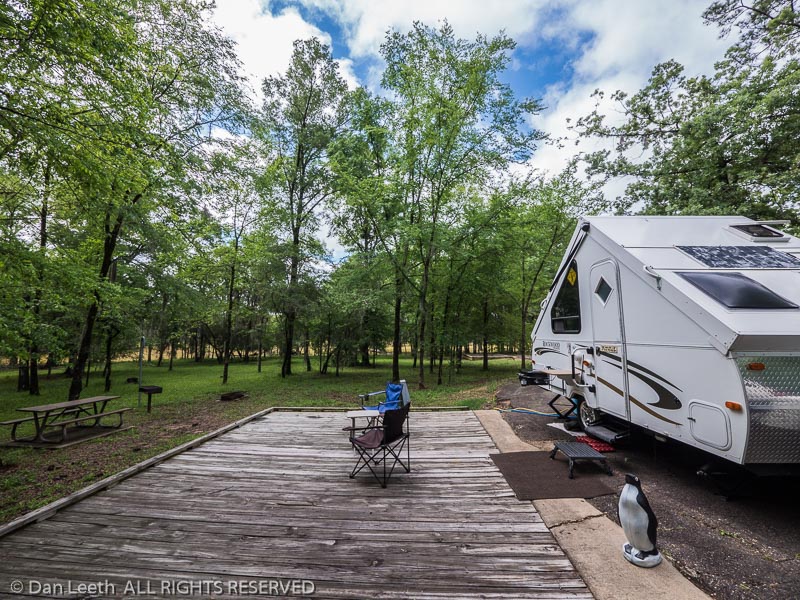
It’s sites like this that remind me of why we like camping in state parks.

It’s sites like this that remind me of why we like camping in state parks.
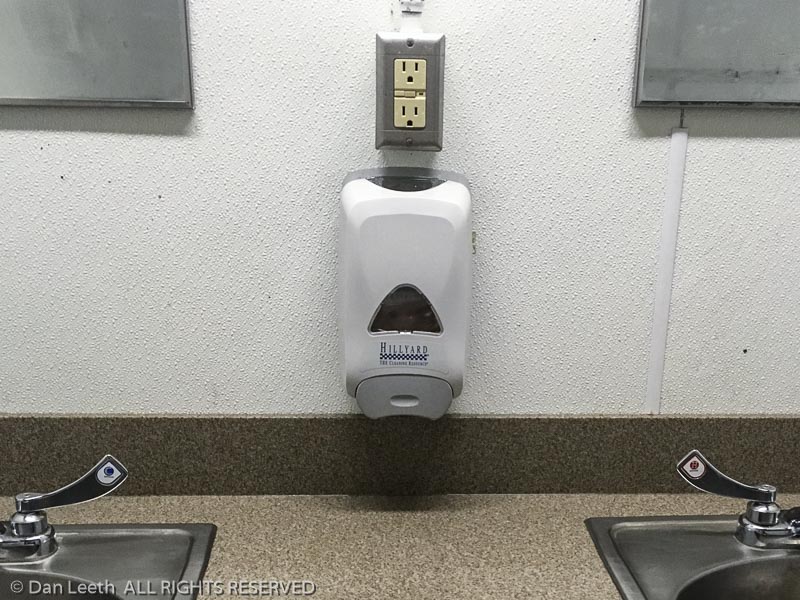
What’s so difficult about equipping a flush-toilet bathroom?
There are four key components for a decent campground restroom, the most obvious of which is that it needs clean, usable toilets/urinals. Beyond that,there should be a sink or two for washing hands, a soap dispenser for cleaning them and either paper towels or a blow dryer for drying them off.
We’re camping in a string of Mid-America state and national parks, paying $25-35 a night partially for the privilege of having flush-toilet restrooms. At Hot Springs National Park (Arkansas) and Lake Bistineau State Park (Louisiana) there were no soap dispensers. At Petit Jean State Park (Arkansas) we found soap but nary a towel dispenser nor blow dryer.
I was thrilled to find that Table Rock State Park (Missouri) seemingly got it right. The men’s side had twin toilets, urinals and sinks with a soap dispenser. I happily used the facilities, washed my hands with foamy soap and walked over to the blow dryer.
I pushed the button. Nothing happened. It was broken.
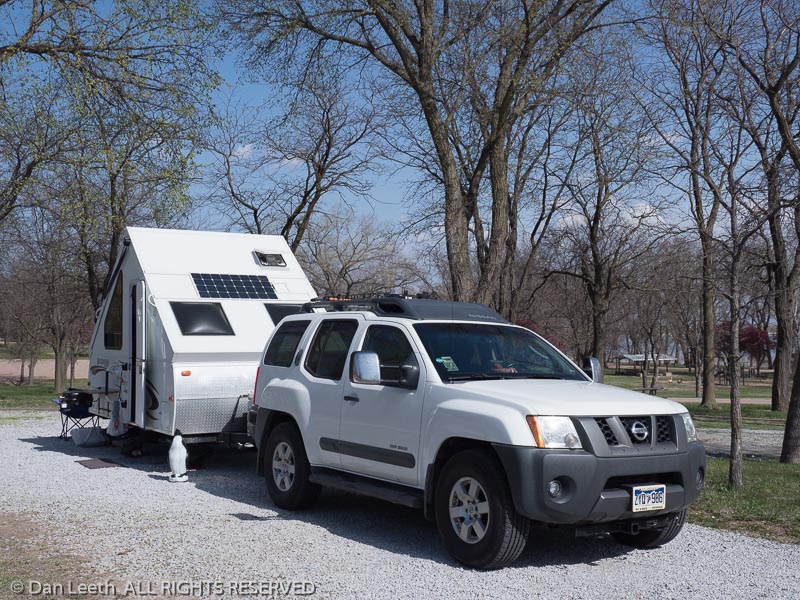
I’m sure all of you Eastern RV campers know about these, but for those of us who have always camped in the West, Corps of Engineer (COE) campgrounds are a pleasant discovery.
We stayed 10 nights at Belton Lake, a COE site in Texas, where we had 120-volt power and a city water hookup along with flush toilets and free hot showers. It only cost $11 a night with our government geezer pass.
Tonight on our way home, we’re at Harlan County Lake, a COE campsite in Nebraska (we’re boycotting Kansas). Because it’s low season, an electric-water site is only $5 for us geezers with free hot showers and flush toilets.
Of course, there’s no soap in the restrooms.
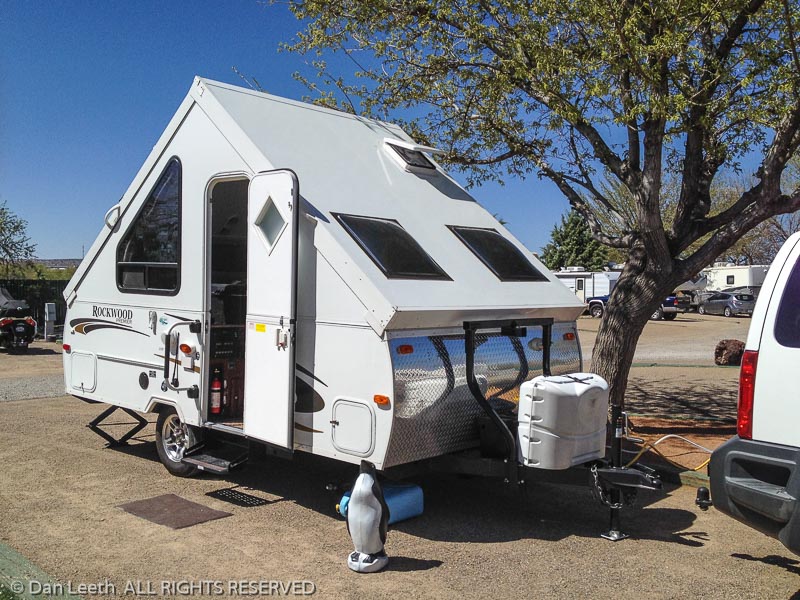
First of 28 nights on the road – this one at a KOA in Bernalillo, New Mexico. I love this KOA because right next door sits a small brew pub with some pretty good beers. All KOAs should be equipped this way.
Next stop the Superstitions in Arizona where we will continue our search for the legendary Lost Dutchman mine.
Or at least drink some Dutch beers.
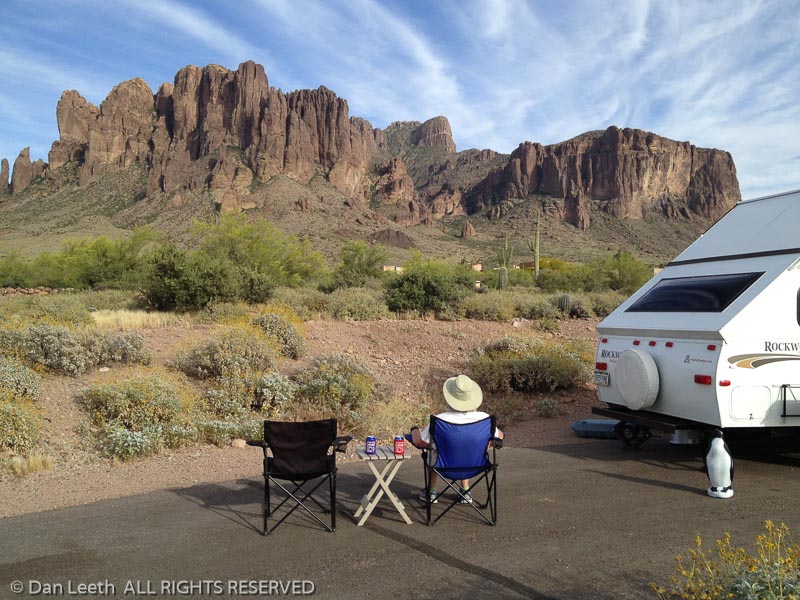
Here we are, sitting back with a brew at Lost Dutchman State Park. Not a bad place to spend the next 14 nights.
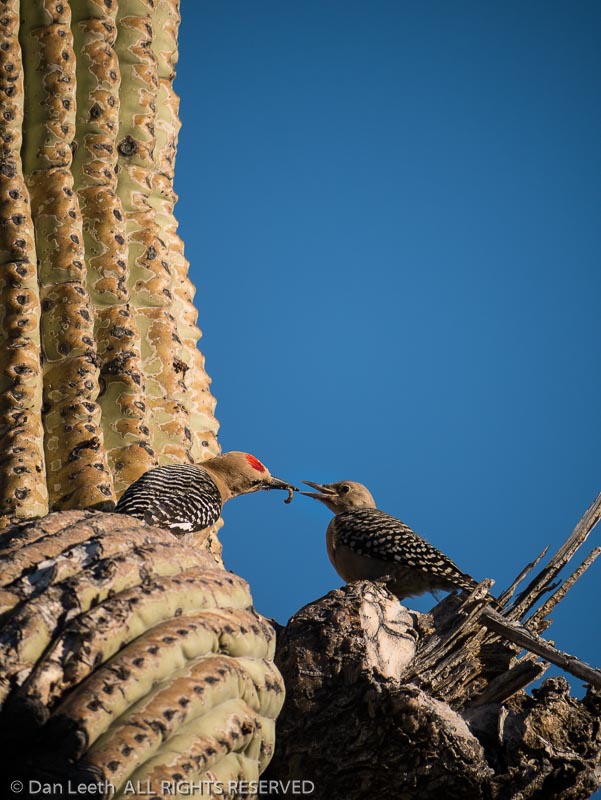
This is a vacation!
As a travel journalist, it’s been a long time since I went on a pure “vacation,” and this feels good. Over the past 21 years, I’ve been to the Superstitions five or six times for a story. I’ve slept in my truck on the edge of nowhere and delayed dinners long past dark just to get sunset shots. I’ve spent hours hunting down experts and conducting interviews. I’ve taken hours of tape recorded notes and more notes.
Not this trip!
We spent the morning walking around the campground. This afternoon, I sat near the picnic table and shot shots of these food-sharing Gila woodpeckers atop an old saguaro. Then it was off for a guided sunset hike during which I took nary a note. (Okay, I did take a few dozen photos, but hey, that’s what I do for fun anyway.)
Tomorrow we’ll drive to the First Water Trailhead where we’ll hike into the wilderness, following much of the same route taken by Julia Thomas, the first of the Dutch hunters. If we don’t find the lost mine, we’ll head back to the trailer for beer and some old vine zin before steaks.
It’s a vacation, after all.
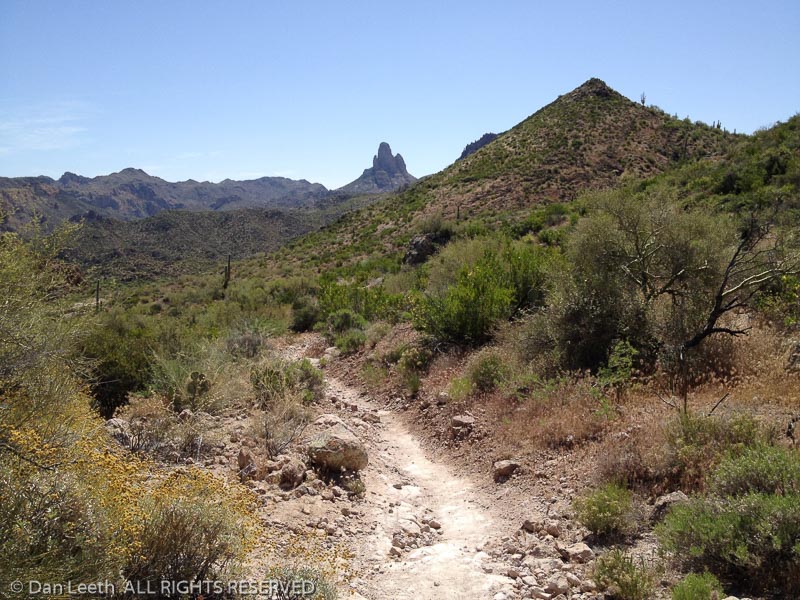
For those not familiar with the legend of the Lost Dutchman Mine, let me fill you in. Back in the 1870s, Jacob Waltz claimed to have found a fabulous ledge of gold in the Superstition Mountains east of Phoenix. Since he was German, I can only assume his “Dutchman” moniker came from some misguided love of Heineken beer. The “Lost” part is evident to anyone who has tried to follow one of those maps to his mine.
From the clues he gave on his deathbed in 1891, his treasure trove is supposedly located somewhere in the vicinity of Weaver’s Needle, a towering monolith of rock, which I assume was named for the ‘50s folk group that once featured Pete Seeger. Unfortunately, at age 81, he apparently forgot some of the details describing exactly how the mine could be found and where he put his mule keys. People have been searching for both ever since.
Using the reasoning powers I perfected while studying French at the University of Arizona, I figure that the Dutchman was probably a bit of an egotist and thus wouldn’t locate his mine on someone else’s trail. So today, on our first attempt to locate his diggings, we naturally followed “Dutchman’s Trail” from the First Water Trailhead. Other than a mother from Michigan hiking with her two daughters, we had the path to ourselves.
We hiked to the lofty summit of Parker Pass from which we had a great view of Weaver’s Needle. We did not however, find anything golden other than petals on scores of cactus blossoms. I can only assume the Michigan mother and her offspring carted the real gold out.
Those young girls looked awfully happy to be heading back towards their car.
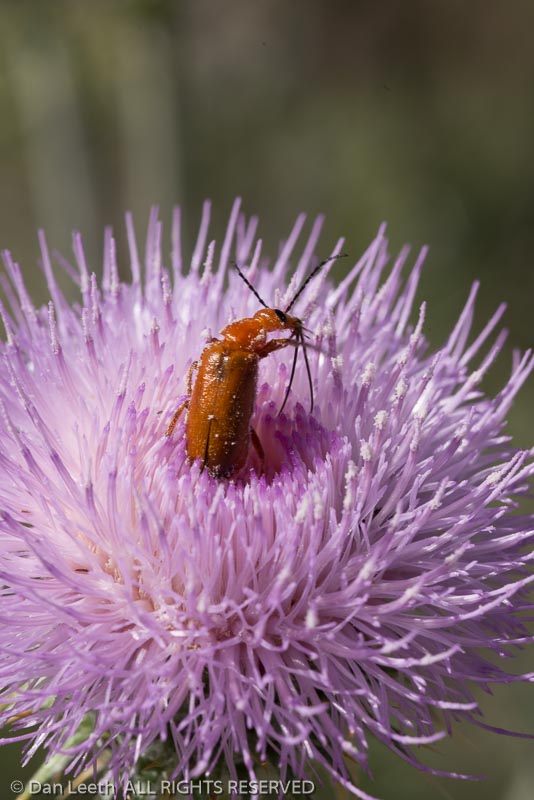
Today was macro-day. Dianne and I grabbed tripods, put on our macro lenses and spent four hours this morning doing nothing but photographing closeups of desert plants, some of which had a little animal life thrown in.
Anybody know what brand of bug this is?
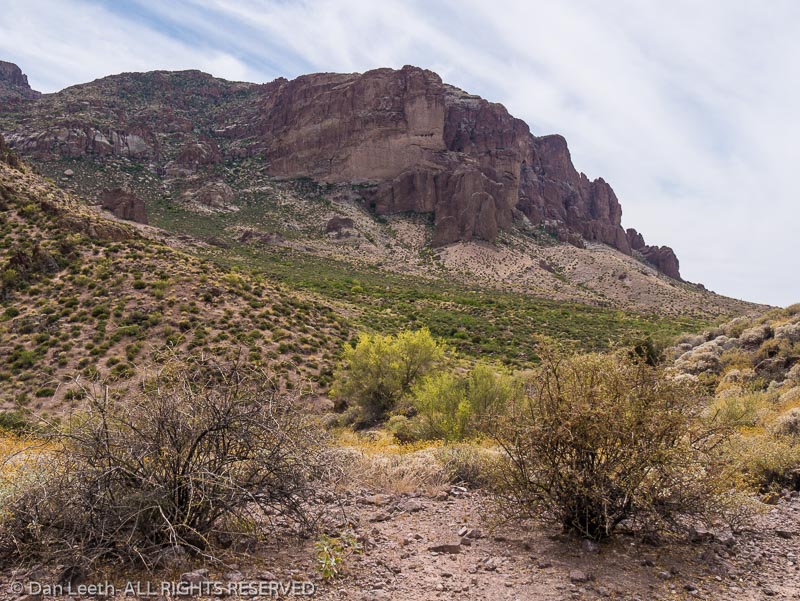
My first hike into the Superstition Mountains came when I was about 9 years old. It was my first ever hike, so naturally, I wore my Roy Rogers cowboy boots.
A friend of my dad’s invited us to join him on a trek into an area known as the Massacre Grounds where, according to the legend, a group of Mexican miners were ambushed by Apache warriors. Supposedly, human bones and bags of gold ore were later discovered in the area lending credence to the tale.
I’ve logged countless miles in these desert mountains since then, but never once have I ever returned to the site of that first hike. Yesterday, Dianne and I hiked to the Massacre Grounds from our campsite at Lost Dutchman State Park.
I don’t remember much from that first hiking trip but I do remember a few major details. The highlights included looking up at four caves carved into a vertical cliff face and wondering what treasures might be found in their depths if one could somehow reach them. I also remember a more accessible shallow cave that we stopped at along the trail. Dianne and I visited that same cave on our hike. It’s apparently shrunk over the years.
I also remember a few low-lights from that initial hiking trip. The gnats, as I remember, were in-your-face horrible, and rather than carrying water bottles in a day pack as we do today, I lugged a John Wayne-style canteen slung around my neck with a painfully thin strap.
And then there were those awful boots. I soon realized why Roy was seldom seen walking.
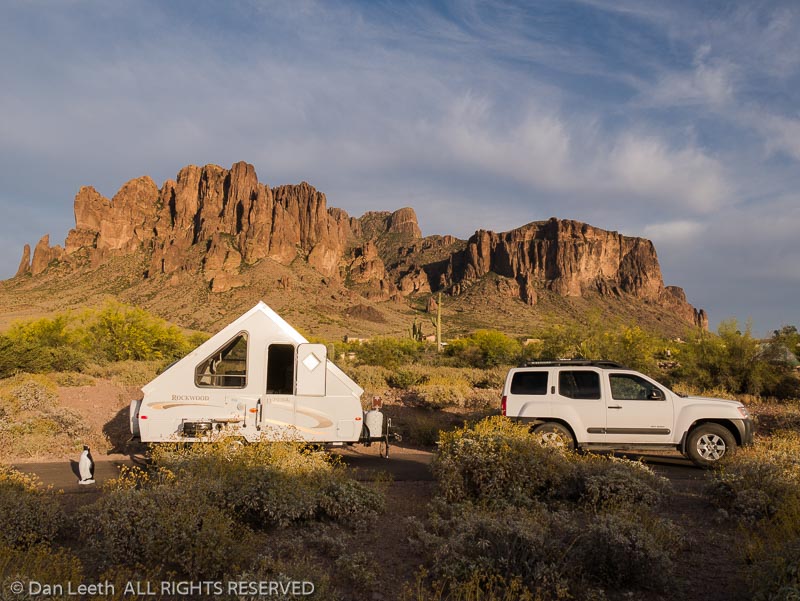
Since we became A-frame trailer travelers two years ago, we’ve camped in state parks in Colorado, Utah, Nevada and now Arizona, and I’ve got to say, Arizona’s Lost Dutchman is one of the nicest and best values.
Unlike Colorado, the camping fee covers the daily admission. In our home state we have to buy a daily (or annual) pass to the parks in addition to the daily camping fee.
In Arizona, we can reserve a site 365 days before arrival, not just six months in advance. We already have our reservations in for March 2016 at Catalina State Park near Tucson. And the reservation fee is only $5 per reservation, not $10 as is common elsewhere.
Hot showers are free here – no dropping quarters into a slot and hoping the water doesn’t shut off before the hair is rinsed. And the showers are clean, have soap trays and there are shower curtains in the stalls to keep dry clothes from becoming wet.
They actually have hand soap in the bathrooms, and paper towels instead of cold-blowing hand dryers.
And best of all, not once has a ranger complained of us having a tire touching the grass. Of course, in this piece of desert, there is no grass.